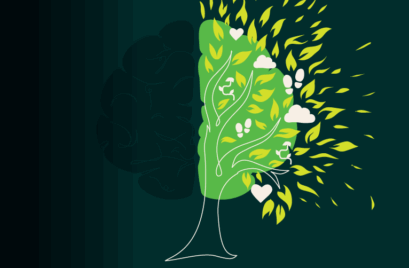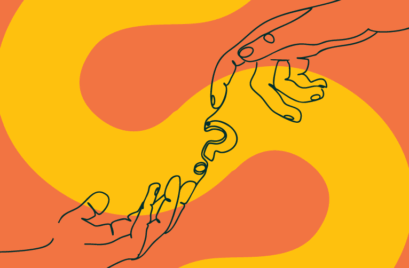
PERMA in PLACE
What constitutes a flourishing human life? What are the practices that promote our wellbeing?
These are the questions posed by Positive Psychology, an increasingly influential area of psychology research and policy. Stemming from the works of Martin Seligman, Positive Psychology is focused on identifying what contributes to a flourishing human life. Disaffected with the focus on pathology and poor health in psychology, Seligman wanted to see a more preventative, and optimistic, approach to psychology.
Over a number of years, Seligman developed the PERMA model for a flourishing life. PERMA stands for:
- Positive Emotion
- Engagement
- Relationships
- Meaning
- Accomplishments
Through practical strategies aimed at improving our experience in each of these domains, we can move towards a more flourishing life. Contemporary research has already begun to bear out the effectiveness of positive psychology interventions for improving mental health. And there’s little doubt that many of these factors are either directly or indirectly linked to human wellbeing.
But what does all this have to do with how we work? Well one of the central teachings of positive psychology is the interconnectedness of human wellbeing. It is not something that one can just practice on the weekend. It runs through our whole week and our whole world view. Taking human flourishing in the workplace seriously is crucial to more fulfilling lives and more impactful organisations.
Flourishing Communities
This sounds very much a matter of individual action and practice though, right? Well, interestingly, the next frontier of positive psychology is ‘group’ positive psychology. What is the nature of the groups, communities, and even countries, which lead to flourishing human lives? Seligman has long been advocating moving away from the Gross Domsetic Profit as a measure of national success and towards a measurement of national wellbeing.
We can see that relationships are already an integral part of the PERMA model. But how we group ourselves socially really touches every aspect of PERMA. Our social relationships impact our emotions, our goals and projects in life and how connected we feel to the world around us.
In an earlier paper, Seligman said ‘group-level’ positive psychology should be about:
“… the civic virtues and the institutions that move individuals toward better citizenship: responsibility, nurturance, altruism, civility, moderation, tolerance, and work ethic.” (p. 5)
This gives us perhaps some hints. One of the significant shifts for thinking about PERMA in the group context is spatial. Suddenly, we are operating with a dimension of ‘place’ rather than just the individual as nexus. Communities are geographically located, and this is something that sits at the heart of human psychology. Of course, the great challenge we are facing in workplace communities at the moment is WFH. There’s no doubt that flexible work has enabled many people, but it has also broken up this notion of place. ‘Where’ is the workplace? Where do we connect? Where is our community? For most companies, a hybrid balance is the only way to get the necessary touchpoints for a PERMA culture to exist at all.
Workplace Communities
Community building in organisations is a priority now more than ever. We need to think seriously about work communities that promote flourishing and how we build them? A recent review of the intersection of community psychology and positive psychology found:
On a smaller scale, community interventions based on positive psychology concepts and theory would involve a good proportion of community members and aim to improve social capital among them through collective projects where they can express their gratitude and build on their character strengths and assets. They would target the improvement of the living conditions of these community members (i.e., the social determinants of health) by increasing access to green spaces, places to meet and play, and jobs where they can thrive, for example. Elements such as context, social justice and values should be taken into consideration.
Some of these types of initiatives are already coming to the fore in the workplace. But there is an opportunity to supercharge. We think PERMA is a critical piece in all this. What does PERMA in place look like at work?
- Positive Emotion – Celebrations and gatherings for joy
- Engagement – Diversity and stretch in opportunities and work
- Relationships – Connection beyond the transactional through events, mentorship, peer and other group connections
- Meaning – Purpose and value alignment through a clear strategy, which is regularly communicated
- Accomplishments – Strengths-based work conversations and opportunities
Community-led efforts are always stronger than top-down approaches. But for this to happen, the community has to believe in the importance of this work. Rather than as something being for the good of the organisation (although this might be an ancillary benefit), it is for the good of the people themselves. The reality is that if we are to be spending much of our time at work, we need to be flourishing there as much as anywhere else.
Instilling this belief is perhaps the most important next step for leaders everywhere.







